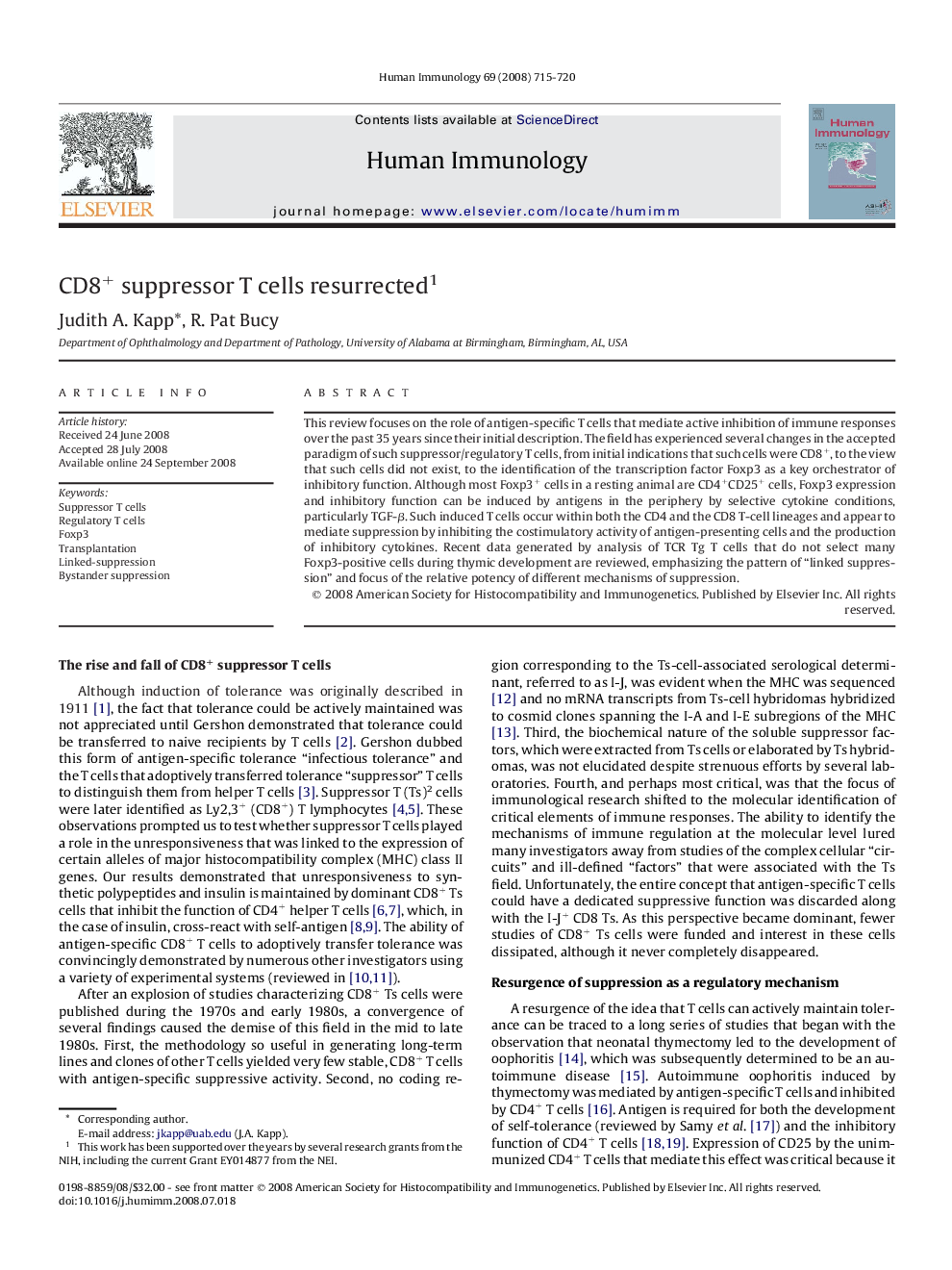| Article ID | Journal | Published Year | Pages | File Type |
|---|---|---|---|---|
| 3352296 | Human Immunology | 2008 | 6 Pages |
This review focuses on the role of antigen-specific T cells that mediate active inhibition of immune responses over the past 35 years since their initial description. The field has experienced several changes in the accepted paradigm of such suppressor/regulatory T cells, from initial indications that such cells were CD8+, to the view that such cells did not exist, to the identification of the transcription factor Foxp3 as a key orchestrator of inhibitory function. Although most Foxp3+ cells in a resting animal are CD4+CD25+ cells, Foxp3 expression and inhibitory function can be induced by antigens in the periphery by selective cytokine conditions, particularly TGF-β. Such induced T cells occur within both the CD4 and the CD8 T-cell lineages and appear to mediate suppression by inhibiting the costimulatory activity of antigen-presenting cells and the production of inhibitory cytokines. Recent data generated by analysis of TCR Tg T cells that do not select many Foxp3-positive cells during thymic development are reviewed, emphasizing the pattern of “linked suppression” and focus of the relative potency of different mechanisms of suppression.
